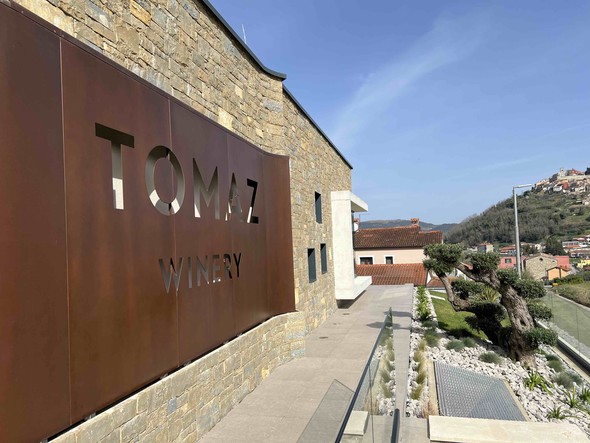This is particularly apparent in Central and Eastern Europe where borders have continually shifted, populations moved, and empires clashed. One such place is Istria, where Celts, Illyrians and more recently, the Venetians, Habsburgs, Italy and Yugoslavia have all left their marks on the region’s landscape and cultural heritage.
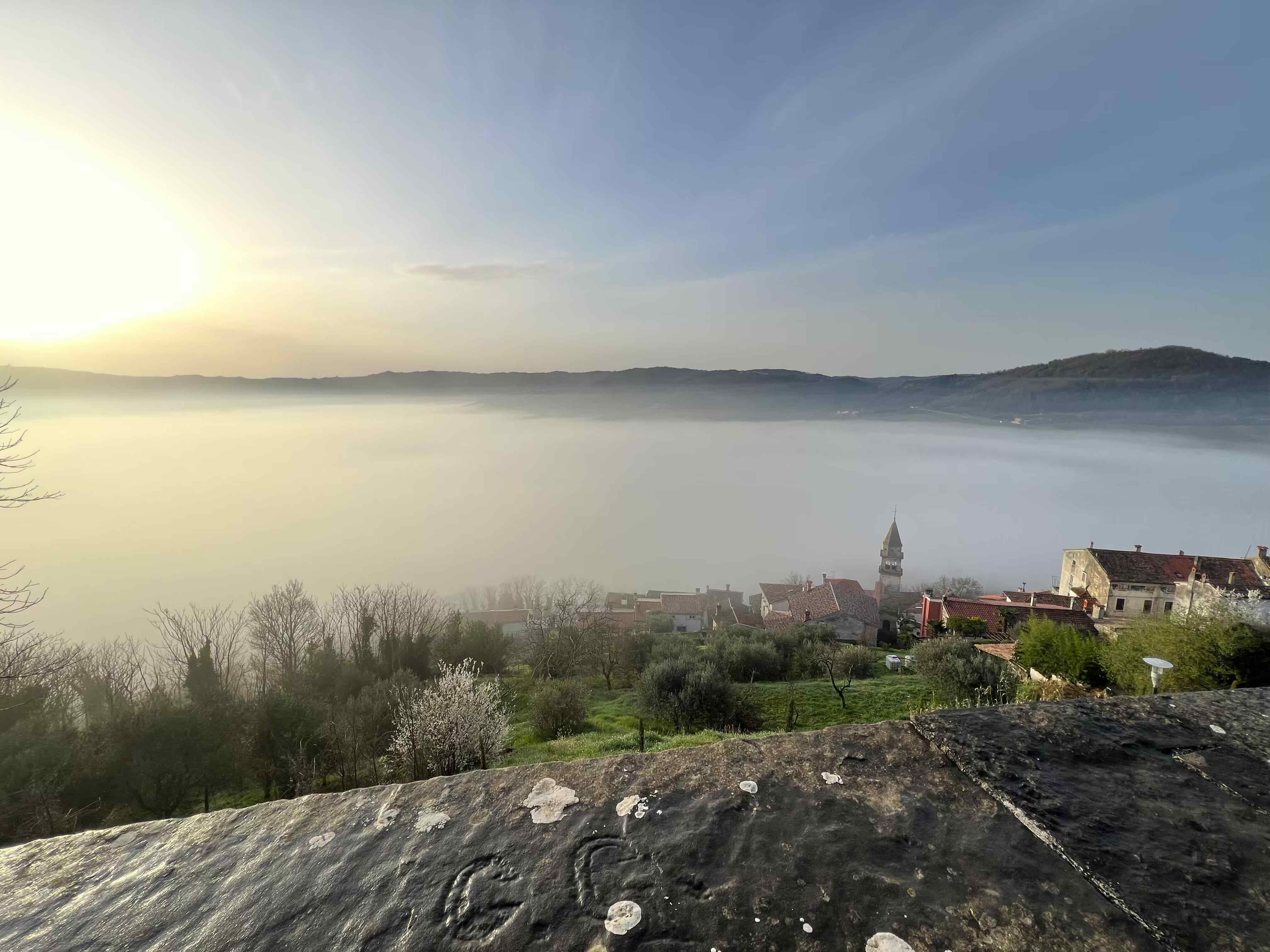
Grape varieties also traverse borders here and may be known by various names, such as Istria’s flagship white Malvazija Istarska, known in Italy as Malvasia Istriana. The variety is generally considered to originate in Istria, long part of Italy until it was lost after WWII. There are also around 200 hectares in Italy, in Friuli Venezia Giulia, where Italian wine guru Ian d’Agata believes it produces some of the best white wines in Italy. However, there are over 3,000 ha in Croatia, mostly in Istria, where it is the key white variety, along with red Teran, and it’s a variety I always seek out at the annual VinArt Grand Tasting in Zagreb. This year, unable to attend the event itself, I was delighted to have the chance to visit Istria direct afterwards and learn more about Malvazija Istarska in situ.
Vineyards above the mist at Motovun
Inextricably linked to Istria and produced throughout the peninsula, there is one place where producers are placing a clear emphasis on the variety, the appellation of Motovun. The vineyards surround the picturesque Medieval hill town of Motovun, still encircled by its solid Venetian walls and boasting stunning views in every direction, that is once the sea of morning mist has lifted. Thanks to both sea and mountain influences, it has a mild Mediterranean climate with continental influences, while River Mirna, the longest river in Istria runs close to its vineyards. The area was long known for its orchards, but many vineyards and olive groves have been revitalised in recent years, along with a new wave of winemaking led by Livio Benvenuti.
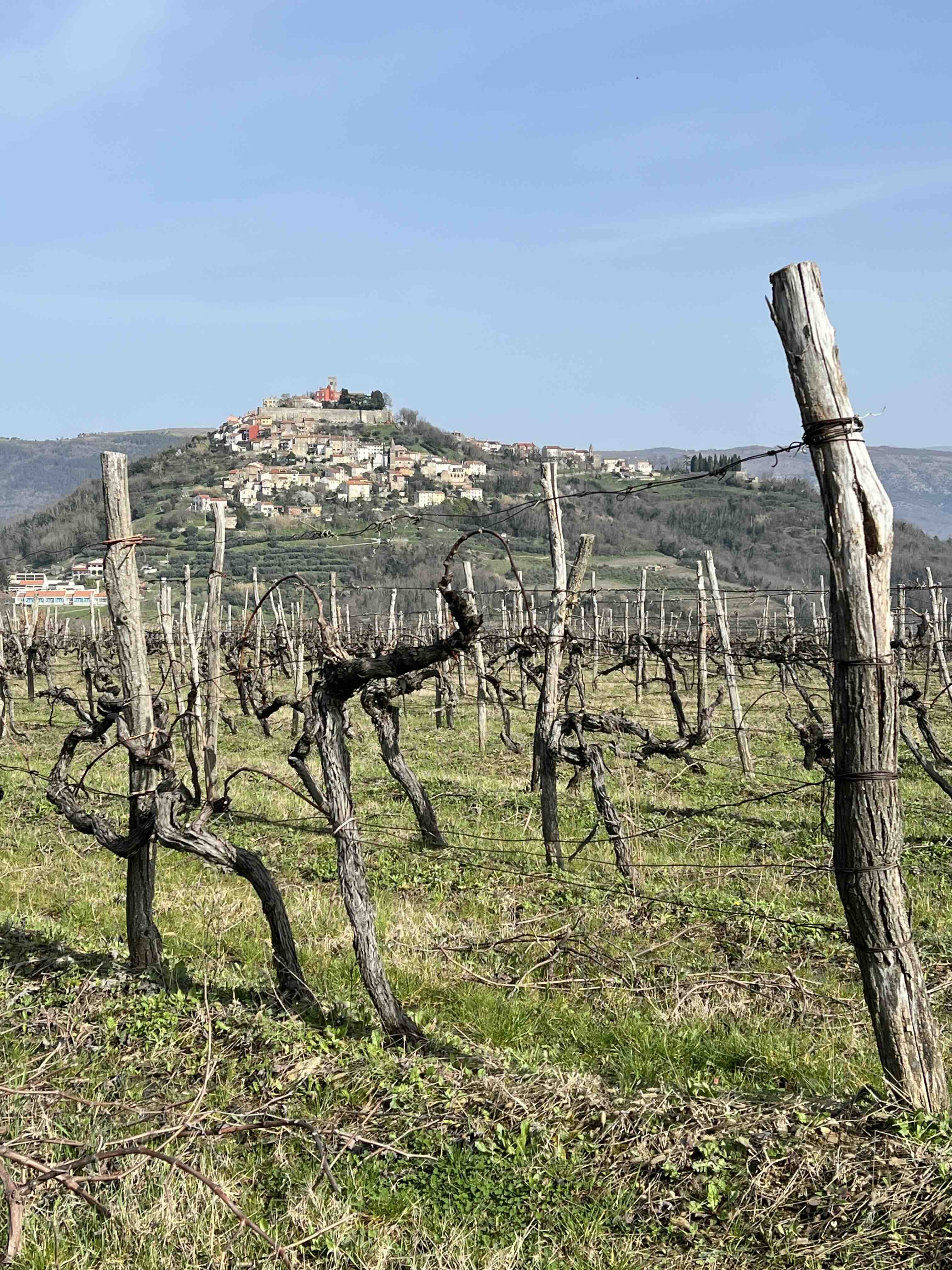
It currently boasts around 180 hectares of vines planted at 100-400 metres above sea level, with Malvazija grown on the lower more fertile flysch soils and Teran on the higher poorer soils above the morning mists. There was previously a cooperative in the area, but now the appellation is primarily made up of five producers – Benvenuti, Fakin, Tomaž, Valenta and Bertoša. This small group of producers are aiming to create a quality-focused boutique destination, a brand ‘Motovun wine experience’ focusing on wine and truffles. With the truffle capital of Istria, Livade, nearby, with its Zigante Truffle Days in autumn and forests also teeming with deer and wild boar, this seems an achievable goal. Film lovers may also have visited Motovun for its film festival.
Fakin good wine, and food
Just inside the town gate lies the Fakin Konoba, a family run restaurant using seasonal local ingredients with a focus on truffles from the Motovun forest. A truffle lover’s dream, so I was in heaven. Marko Fakin also runs one of Motovun’s award-winning wineries and has a clear focus on Malvazija – of their 40 hectares, 17.5 are Malvazija. The family had been growing grapes and other crops for centuries – their oldest vines are 70 years old - and started their own wine label in 2010. Like most Istrian wineries, they produce two main styles of Malvazija – a youthful version made in stainless steel with distinctive varietal aromas of green apple, herbs and white flowers as well as their flagship La Prima, which spends 12 months in acacia, resulting in a richer, oily, honeyed wine with attractive minerality. Thanks to the variety’s versatility, they also make sparkling and amphora-aged versions.
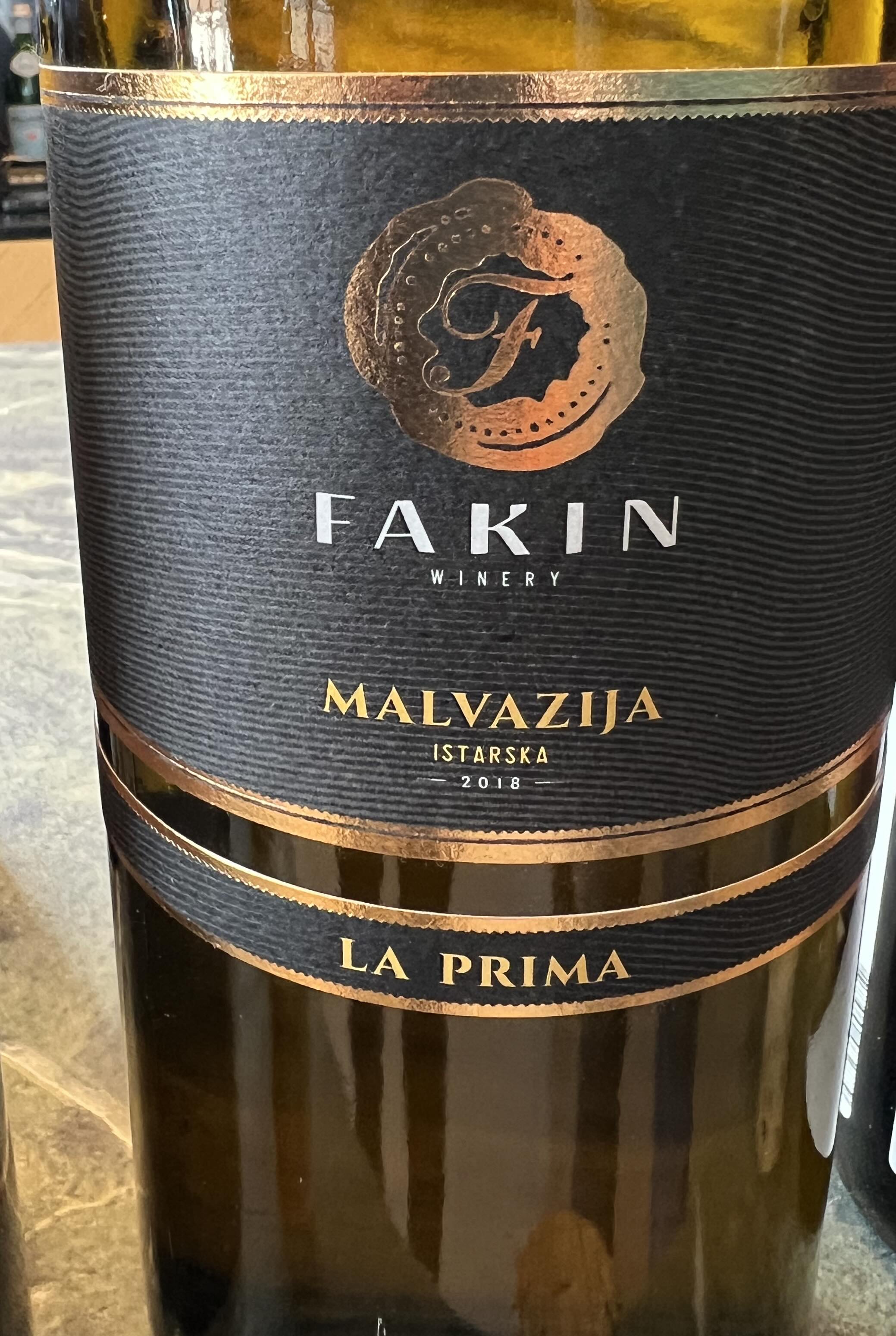
Visionary of new wave Istrian winemaking
Three generations of the Benvenuti family have made it their mission to preserve Istria’s traditional grape varieties. Convinced of the excellence of Motovun’s terroir, Livio Benvenuti began building a winery in the old family cellar in the early 2000s together with sons Albert and Nikola, and they now export 30% of their production to over 10 countries. Their oldest vines were planted in 1946 by their grandfather on his return from the war. They plant some vines every year and now boast 22 hectares. Highlighting the terroir, they say that Malvazija closer to the coast may drop acidity due to lack of water and altitude, while the climate here helps retain freshness and minerality. As we drive through the muddy vineyards in 4-wheel drives, Albert and Nikola point out large areas of free land belonging to the state, which they have been trying to acquire since the 1990s, but to no avail.
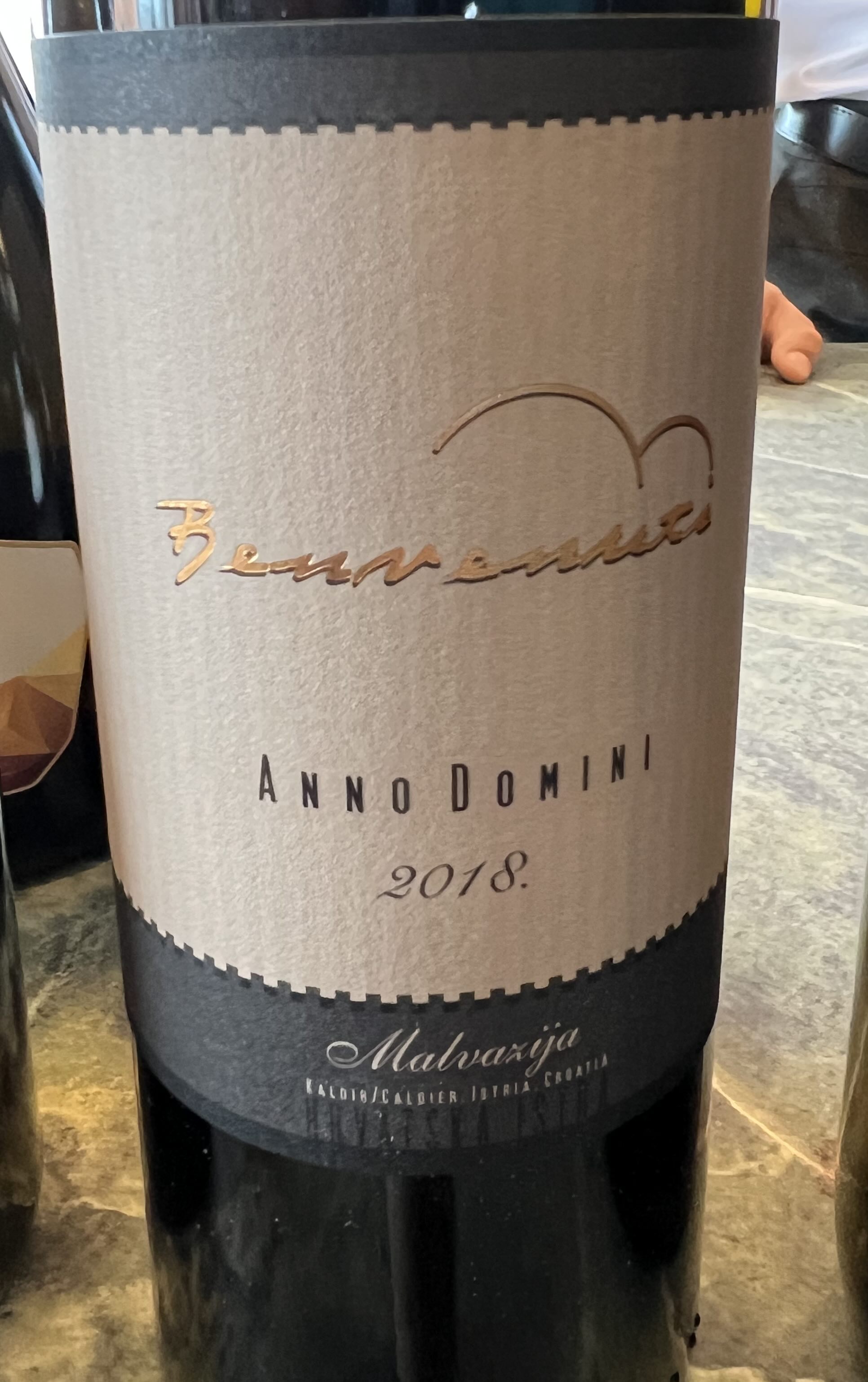
Like the Fakins, they have two key styles of Malvazija. Tradition Malvazija Istarska, fresh mineral and all fruit, it spends 6 months on the lees in stainless steel and boasts peach and lime with a pleasant bitter note on the finish. Livio Malvazija, on the other hand, comes from their oldest vineyards, undergoes wild fermentation, 15 days skin maceration and spends 1 year in large oak on its fine lees with occasional stirring, resulting in an intense complex, rich, creamy wine with intense notes of peach and a long saline finish. From their plot on Šubient Hill, they also make a sweet wine from Malvazija, blended with Muscat and old local variety Ulovina, which adds acidity.
Wines outside the ordinary
The Tomaž family began making wines in 2008, naming them Frameless in deference to their extraordinary character. Their new winery made of Istrian stone and corten – a kind of constantly changing patinated steel which reflects the influence of the weather on the vineyards – played host to our in-depth Malvazija tasting with panoramic view of Motovun. Their Sesto Senso Malvazija is made from selected berries from the best positions, undergoes 21 days maceration and 18 months on fine lees in large oak, mulberry and acacia, yielding a complex wine with toasted hazelnut, honey, tobacco and cinnamon.
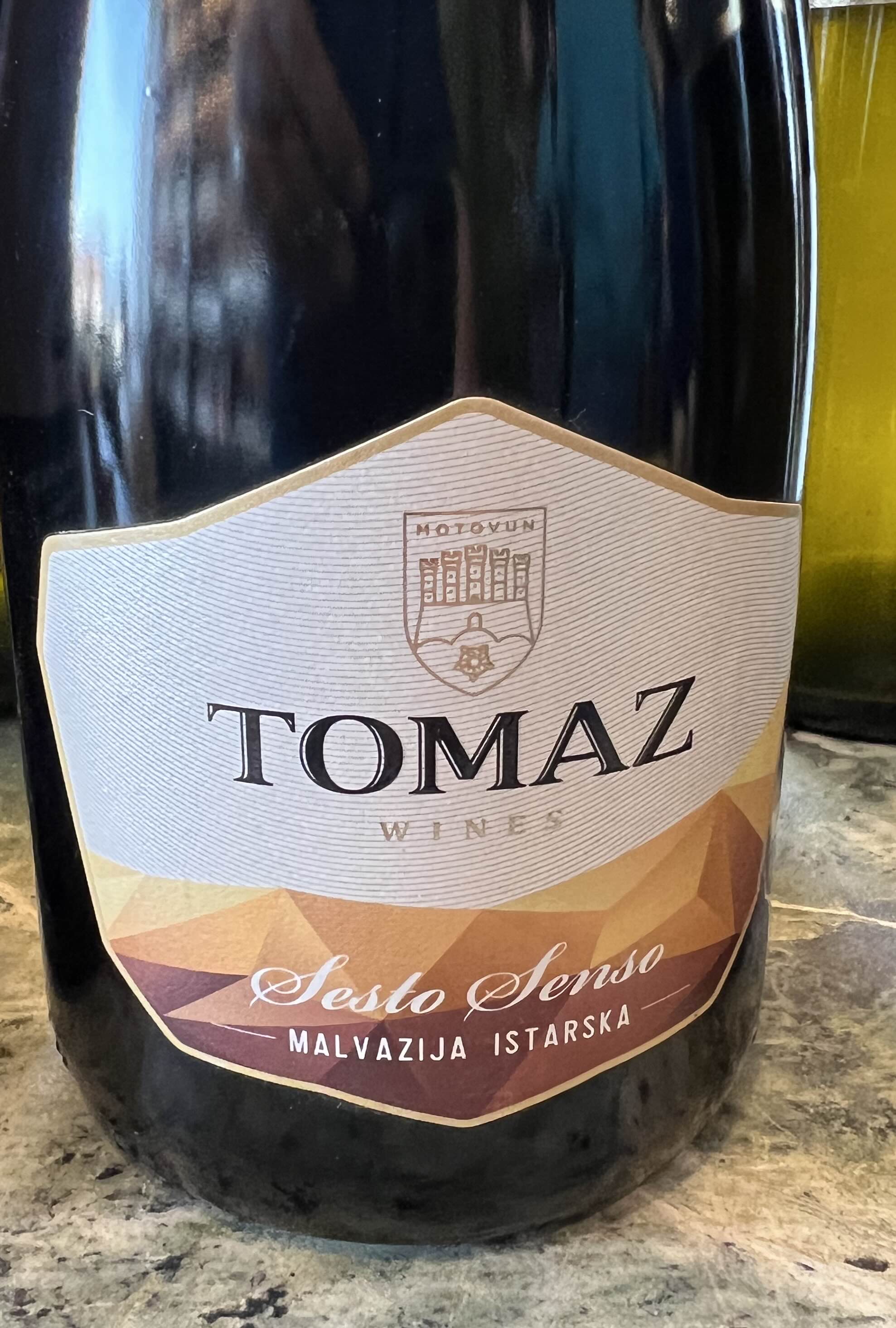
These three stalwarts were joined at the tasting by the small Kaldir-based Bertoša winery, where Guerino Bertoša has been revitalising abandoned plots helped by son Robi and the Valenta winery, founded in 2017, hence one of the youngest wineries in Istria.
Malvazija impresses both in youth and with age
Our 16-Malvazija tasting included both fresh and aged styles. The young wines were generally crisp, mineral and saline. Fresh and juicy with green apple, peach, lemon and herbal tones. My favourite of these five was the Benvenuti with notes of fennel, sage and bitter almond. But what I discovered here was that Malvazija really comes into its own with a bit of age and some subtle wood maturation.
My top 6
Fakin 2022 La Prima I 93 points - Deep lemon-gold in colour and laced with honey, dried peach and citrus peel. Intense and waxy with notes of mandarin and bitter almond.
Fakin La Prima 2015 I 93 points – Medium, slightly opaque lemon. A waxy bomb of dried fruit and lemon curd. Rich, layered, textured, yet also very bright and fresh with a saline finish.
Benvenuti Livio 2022 I 90 points – Some restraint here but lovely notes of honey, almond, peach and bitter almond with a lingering saline finish.
Fakin 2018 (magnum) I 90 points - A complex, layered, evolved concoction of honey, dried apricot, lemon, and dried herbs with a long savoury, saline finish.
Benvenuti Anno Domini 2018 I 89 points – Lovely layered wine with honey, dried fennel, sage, citrus peel and mandarin with crisp acidity and a savoury finish.
Tomaz Sesto Senso 2015 I 89 points – A saline, smoky wine with layers of baked apple, honey, dried fruit and salted lemon.
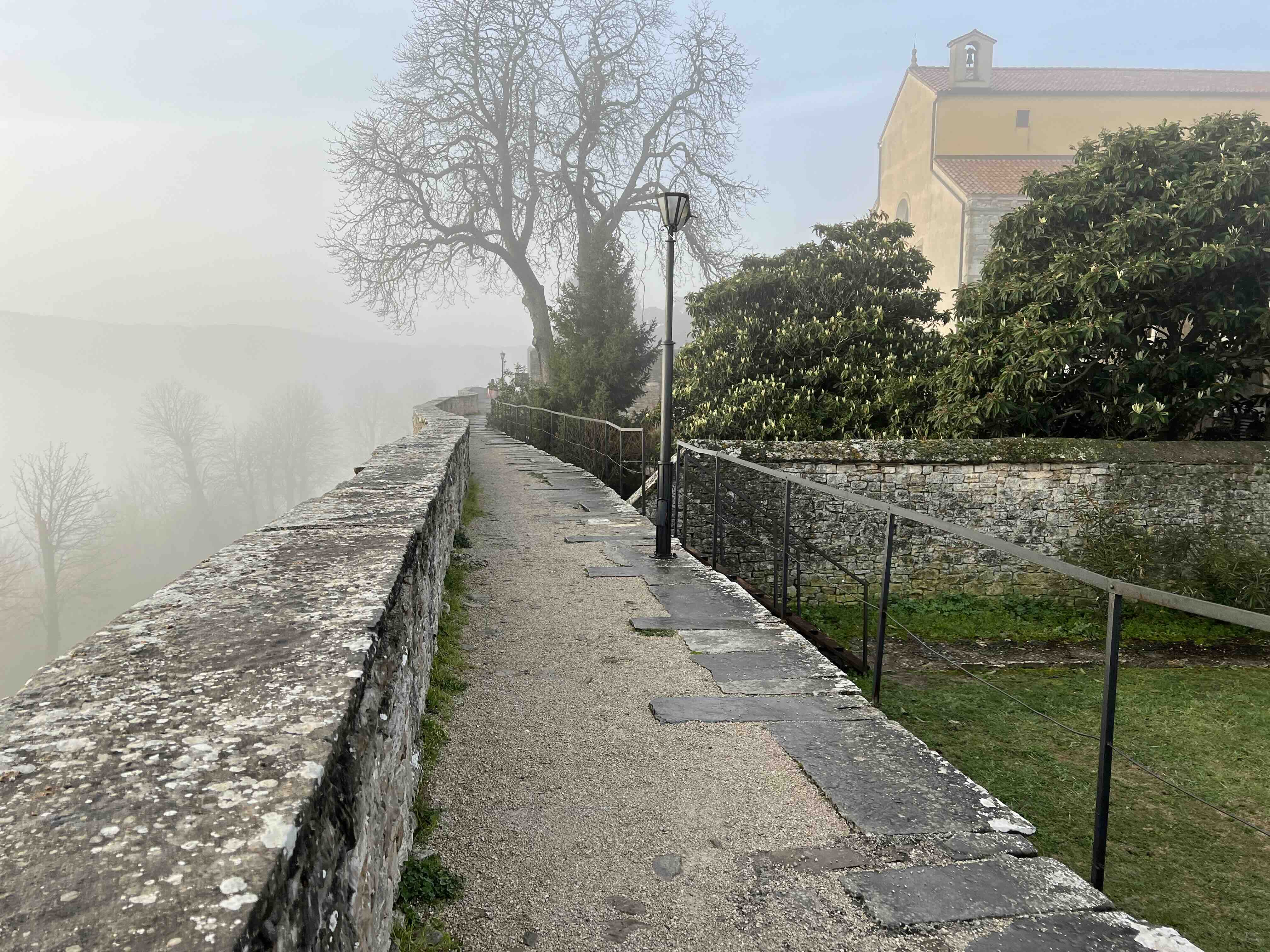
Modern Istrian wine scene pioneer
Buoyed by good Malvazija, Teran and lunch, we continue towards the Slovenian boarder to visit iconic Malvazija producer Gianfranco Kozlović. One of the pioneers and symbols of the new Istrian wine scene, the family has worked in the Vale Valley below Momjan since 1904. A true Messiah of Malvazija, the winery also produces single-vineyard wines from two hectares of rescued vines previously owned by the local cooperative in one of Istria’s grand crus, ‘Santa Lucia’. Now working on 40 hectares, in 2012, he and wife Antonella opened one of the most modern wine cellars in the region, also incorporating the old cellar. They mostly work with Malvazija and Momjan Muscat and are currently replanting several hectares of Teran to Malvazija, reshaping the hills into terraces. They are aiming to make the variety more recognisable with their skin contact amphora Malvazija, but generally use a mixture of Slavonian and French oak for ageing, with Santa Lucia fermented and aged in large oak. Interestingly, Gianfranco reports that at the en primeur two weeks before, he had noted greater interest in the fresh wines rather than the aged ones, which we personally generally found more intriguing. He also says they are trying to personalise and be more precise with what they want to communicate, especially with the Santa Lucia label, which is picked and selected by hand – all a lot more work since they are now organic.
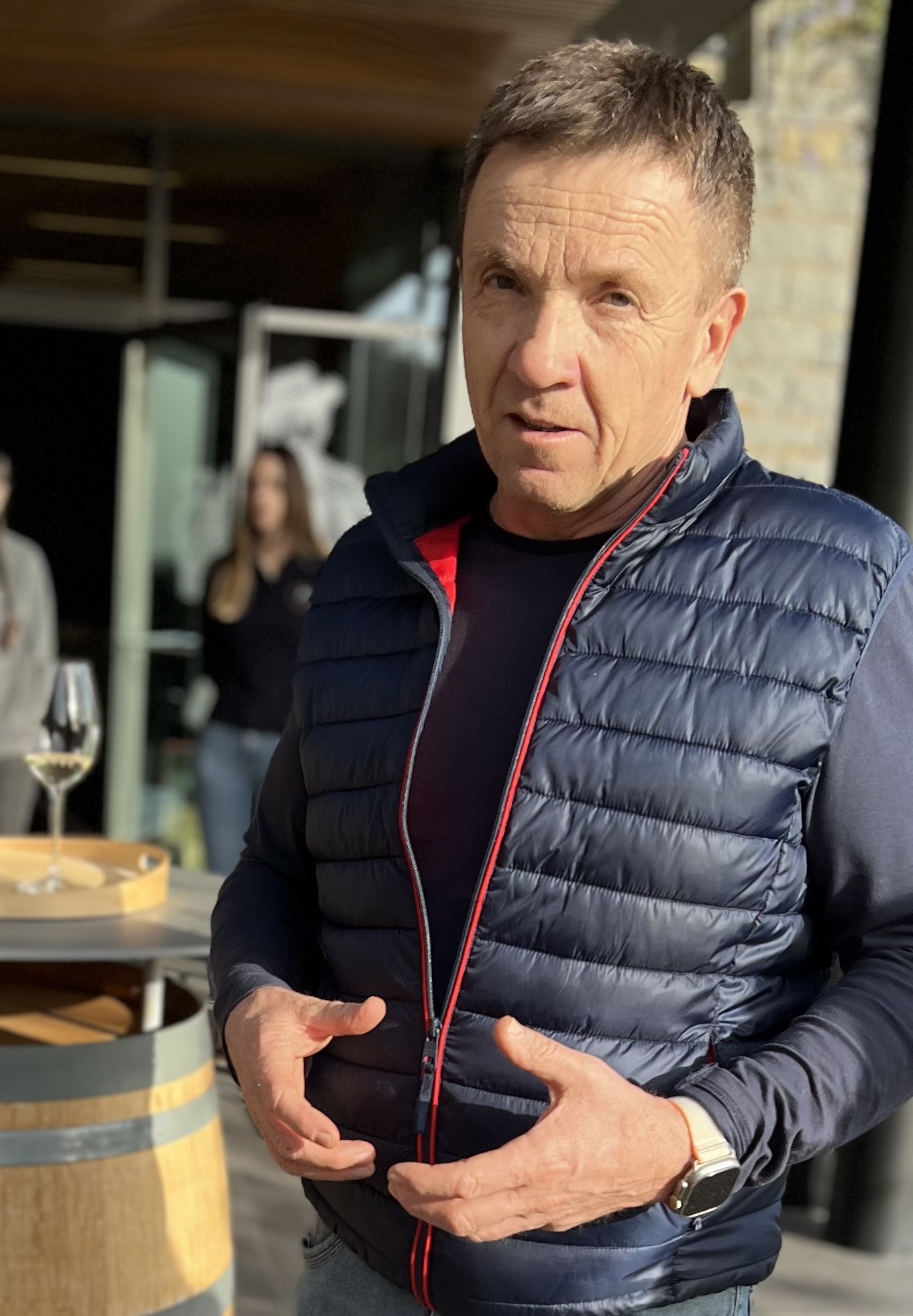
After the cellar tour, a treat of three verticals awaited – fresh Malvazija, Selekcija and Santa Lucia.
Incredibly, the ‘basic’ stainless steel wines showed extremely well even with age. Tasting the 2021, 2016 and 2002, we saw that the 2002 was still holding up well, very complex and layered with a saline finish, while the 2016 was beautifully textural and layered.
Selekcija is often picked later than the fresh style and ages slower, thus is only launched after two years. Tasting the 2019, 2020 and 2021, the 2020 impressed me the most with its honeyed, expressive, textured style with notes of marzipan, dried peach and saline minerality.
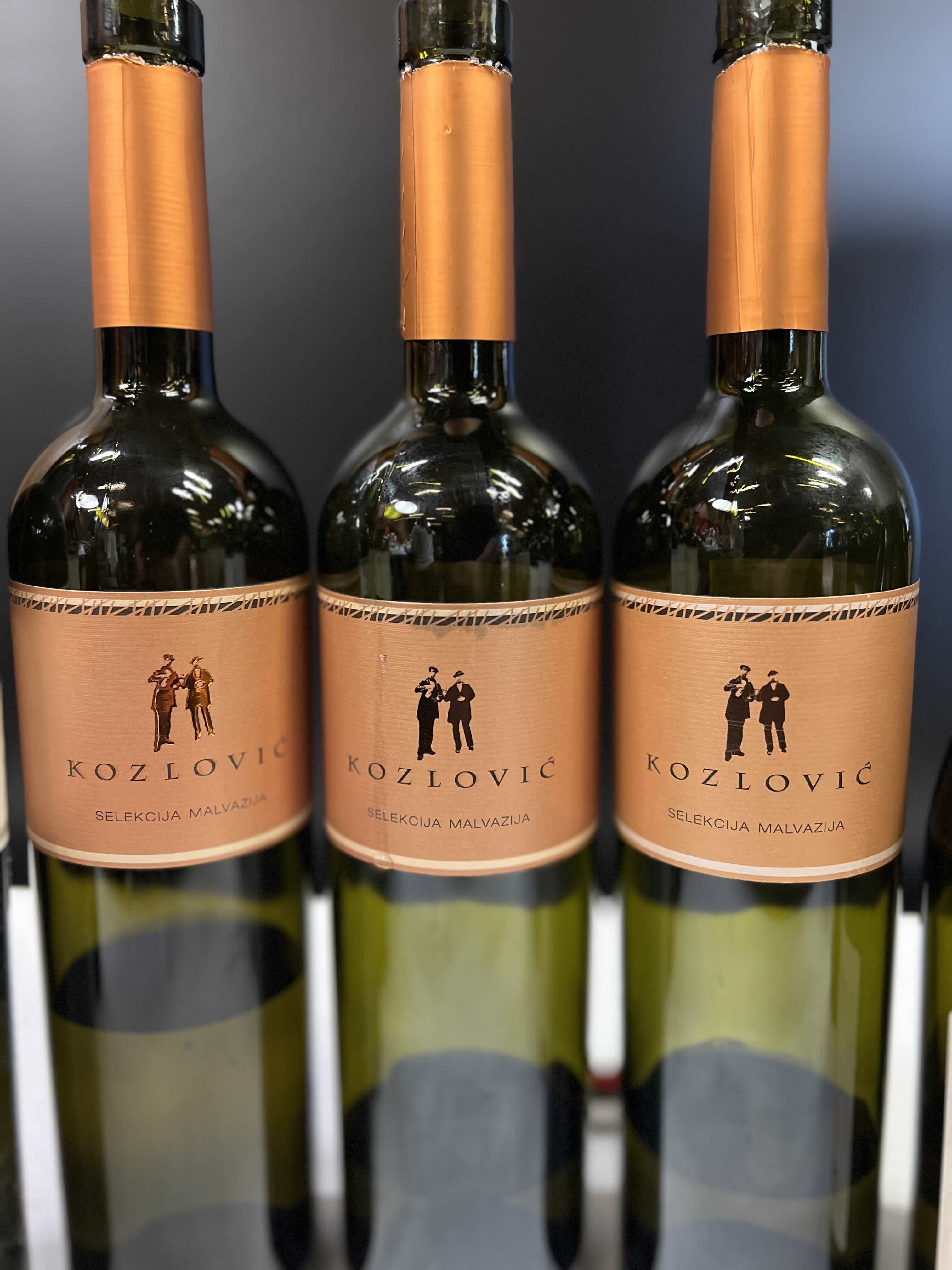
Santa Lucia comes from a 60-year-old single vineyard. Grapes are macerated for 4-5 days before being fermented in old oak and aged in a mixture of 500 l French and Slavonian oak. The 2017, 2013 and 2003 were all beautiful, complex 90+ point wines, with the 2003 showing no hint of oxidative flavours despite its amber colour; it was textured, layered, honeyed, sapid, herbal, mineral and long
I’m happy to say that my trip to Istria reinforced my love of Malvazija Istarska, both fresh and aged, and I hope to taste many more of them in the future.



